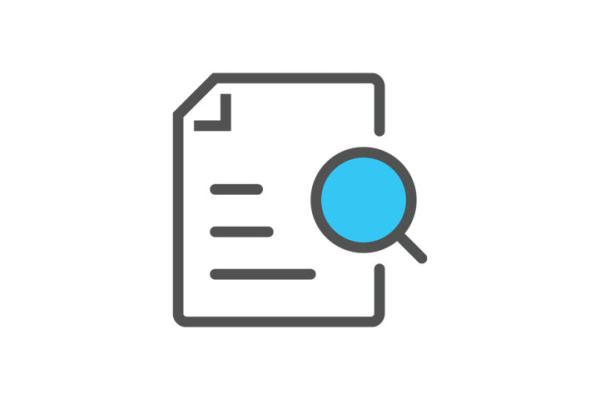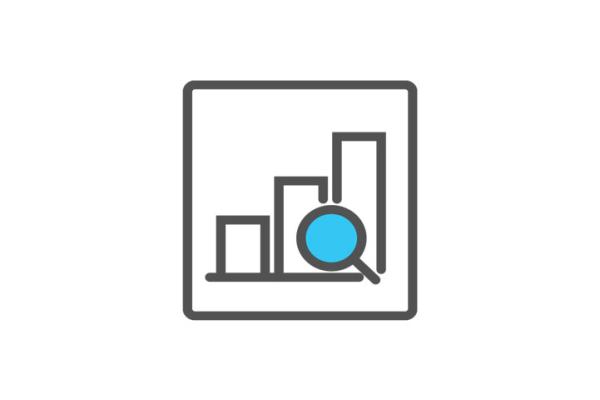Transforming the future of medicine
Just a few years ago, we spoke of Artificial Intelligence’s (AI's) promise; today, it has become a tangible reality. In addressing the complexities of global healthcare challenges, AI is emerging not just as a tool but as a transformative force reshaping healthcare delivery.
The advancements in AI technology present unprecedented opportunities to revolutionise healthcare, making it more effective, accessible, and economically sustainable. By fostering the integration of AI through appropriate policies, we can enhance equity, improve care, and ensure that new technologies, treatments, and medicines benefit society at large:
- AI can facilitate the efficient allocation of healthcare resources. Predictive modelling can forecast patient admissions and optimise the use of hospital beds, staff, and equipment. This ensures resources are available where and when needed most, reducing waste and enhancing the quality of care.
- AI also has the potential to tackle some of the most pressing challenges in healthcare, such as rising costs, inefficiencies, and the demand for higher-quality care.
- AI can reduce costs and streamline administrative tasks like patient scheduling, billing, and electronic health records management by automating and optimising operations. This can free healthcare professionals to focus more on patient care.
- In diagnostics, AI enhances accuracy and enables earlier detection, often leading to less invasive and more cost-effective treatment options.
- AI-driven personalised treatment plans can complement traditional approaches by offering more targeted and effective care, improving patient outcomes while also helping to reduce the financial burden on healthcare systems.
Practical applications of AI in clinical practice include:
- early detection of Sepsis: AI systems deployed in intensive care units can predict the onset of sepsis–a life-threatening condition–hours before clinical symptoms appear, enabling timely intervention
- AI-Powered Breast Cancer Detection: AI systems used in mammography screening can identify early signs of breast cancer with remarkable accuracy, often surpassing the capabilities of human radiologists.
AI is transforming the pharmaceutical sector across the entire lifecycle of medicines, from medicinal product discovery and development to pharmacokinetics, evaluation, manufacturing, marketing, approval, and pharmacovigilance.
In medicines discovery, AI accelerates the process by identifying targets and optimising the design of medicinal products. During development, AI enhances formulations and facilitates personalised medicines. In pharmacokinetics, AI-driven predictions help determine optimal dosing, while in clinical trials, AI assists with patient stratification, digital twins, and trial simulations. Manufacturing benefits from AI through automation and improved quality control.
Furthermore, AI streamlines medicine authorisation and pharmacovigilance by enabling digital submissions and analysing real-world data to detect safety signals early. These advancements significantly reduce time and costs by streamlining research, optimising processes, and minimising clinical trial failures, thus accelerating the delivery of safe and effective medicines.
The reform of the EU pharmaceutical legislation is an important enabler:
- it foresees the electronic submission of applications
- utilises real-world evidence and health data for regulatory purposes
- clarifies the interlink with medical devices and other products
- introduces the concept of adapted frameworks and regulatory sandboxes.
These advancements create a regulatory environment that supports AI-driven innovations in medicines, enabling greater innovation, efficient data integration, informed regulatory decision-making, and effective product lifecycle management. Beyond clinical practice, AI is driving innovation in public health.
Predictive analytics can identify patterns and trends, enabling early interventions and prevention strategies. For instance, AI can forecast disease outbreaks by analysing diverse datasets, allowing timely and targeted public health responses that mitigate the spread of diseases and reduce their economic impact.
As we integrate AI into healthcare, we must remain focused on the overarching goal: leveraging this transformative technology to deliver equitable, high-quality care to all. With the right policies and innovations, AI has the potential to drive a healthier, more sustainable future for everyone.
Challenges of integrating AI in healthcare
The integration of AI into healthcare comes with its own set of challenges. Achieving a successful digital transformation, particularly in advancing AI, requires several critical components. Building trust and acceptance of AI in healthcare delivery, as well as addressing challenges related to its deployment in clinical practice, are also essential for realising its full potential. These include access to high-quality health data, measures to foster AI innovation, and ensuring that AI systems used in medicine are both safe and trustworthy.
Additionally, ensuring sustainable financing, particularly in public hospitals, is crucial for AI adoption, as is integrating AI into clinical workflows–not merely as an added tool but as part of a redefined more efficient care process. Equally important is establishing a robust framework that allows victims to effectively seek compensation from manufacturers in cases of harm caused by defective products, including AI systems.
EU legislation shaping AI in healthcare
The AI Act
On 1 August 2024, the European Artificial Intelligence Act (AI Act) entered into force. The Act aims to foster responsible artificial intelligence development and deployment in the EU. High-risk AI systems, such as AI-based software intended for medical purposes, must comply with several requirements, including risk-mitigation systems, high-quality data sets, clear user information and human oversight.
Additionally, the Commission expects to finalise a Code of Practice for providers of general-purpose Artificial Intelligence (GPAI) models by April 2025. This Code, foreseen by the AI Act, will address critical areas such as transparency, copyright-related rules, and risk management. The provisions on GPAI will apply 12 months after the AI Act entered into force.
A European AI Office has been established that is the centre of AI expertise across the EU. The AI Office plays a key role in implementing the AI Act - especially for general-purpose AI - fostering the development and use of trustworthy AI, and international cooperation. The AI Office will supervise implementing and enforcing of the AI Act rules on GPAI.
The AI Act aims to provide AI developers and deployers with clear requirements and obligations for specific AI applications while also working to minimise administrative and financial burdens, particularly for small and medium-sized enterprises (SMEs).
The AI Act is part of a wider package of policy measures to support the development of trustworthy AI, including the AI Innovation Package and the Coordinated Plan on AI. Together, these measures guarantee the safety and fundamental rights of people and businesses regarding AI. They also strengthen uptake, investment and innovation in AI across the EU.
The AI Act entered into force on August 1, 2024, and will be fully applicable 2 years later, with some exceptions: prohibitions will take effect after six months, the governance rules and the obligations for general-purpose AI models become applicable after 12 months and the rules for AI systems - embedded into regulated products - will apply after 36 months.
To facilitate the transition to the new regulatory framework, the Commission has launched the AI Pact. This voluntary initiative seeks to support future implementation and invites AI developers from Europe and beyond to comply with the key obligations of the AI Act ahead of time.
The European Health Data Space Regulation (EHDS)
The development and deployment of AI in medicine require access to diverse and high-quality health data to ensure accuracy, robustness, and fairness across different populations. The European Health Data Space (EHDS) plays a crucial role in facilitating this by enabling the secondary use of electronic health data for research and innovation.
By allowing the training, testing, and evaluation of algorithms–including those used in medical devices, in vitro diagnostic tools, AI-driven clinical decision support systems, and digital health applications—the EHDS will help advance cutting-edge AI solutions while ensuring compliance with data protection and ethical standards. This structured access to health data will not only drive innovation but also enhance patient safety and equity in AI-driven healthcare.
The European Health Data Space (EHDS) will be a key pillar of the strong European Health Union and is the first common EU data space in a specific area to emerge from the European strategy for data. The EHDS has entered into force in 2025. The EHDS:
- empowers individuals to take control of their health data and facilitate the exchange of data for the delivery of healthcare across the EU (primary use of data)
- fosters a genuine single market for electronic health record systems
- provides a consistent, trustworthy, and efficient system for reusing health data for research, innovation, policy-making, and regulatory activities (secondary use of data).
By doing so, the EHDS enables the EU to fully benefit from the potential of a safe and secure exchange, as well as the use and reuse of health data to benefit patients, researchers, innovators, and regulators.
Trust is a fundamental enabler for the success of the European Health Data Space. EHDS will provide a trustworthy setting for secure access and processing a wide range of health data. It builds further on the following:
- General Data Protection Regulation (GDPR)
- Data Governance Act
- Data Act
- Network and Information Systems Directive.
As horizontal frameworks, they provide rules that apply to the health sector. However, the European Health Data Space will provide specific sectoral rules, considering the sensitivity of health data.
Product Liability Directive
The new Product Liability Directive (PLD) updates and adapts the EU’s liability rules for new technologies, ensuring better protection for victims and greater legal certainty for economic operators.
The Product Liability Directive ensures that victims can claim compensation from manufacturers when they suffer damage caused by a defective product.
This directive is based on 2 main principles:
- the manufacturer has to compensate the damage caused by a defective product of theirs
- the victim has to prove the product’s defectiveness and the damage that was caused and establish that this defectiveness was the cause of the damage.
Software, such as operating systems, firmware, computer programs, applications, or AI systems, is increasingly common on the market and plays an increasingly important role in product safety. Under the new PLD, software is a product to which no-fault liability is applied, irrespective of the mode of its supply or usage.
A developer or producer of software, including AI system providers within the meaning of Regulation (EU) 2024/1689 of the European Parliament and the Council (AI Act), should be treated as a manufacturer. In assessing the defectiveness of a product, all circumstances shall be considered, including the effect on the product of any ability to continue to learn or acquire new features after it is placed on the market or put into service.
Additionally, the product's defectiveness shall be presumed when the claimant demonstrates that the product does not comply with mandatory product safety requirements laid down in Union or national law intended to protect against the risk of the damage suffered by the injured person.
AICare@EU (Deployment of AI in Healthcare)
Despite significant progress in the research and development of AI/Machine Learning (ML)-enabled medical devices, their market presence remains relatively limited, and the integration of AI into clinical practice is progressing slowly. The AI Act, EHDS, and PLD aim to foster AI research, development, and deployment in healthcare. However, several challenges must still be addressed to ensure the effective and efficient implementation of AI tools and to scale up their equitable and fair adoption in clinical practice.
To tackle these challenges, DG Health and Food Safety is advancing several interconnected initiatives under the framework of AICare@EU. This initiative builds on the foundation provided by the above legislative frameworks and focuses on addressing key barriers to deploying AI in healthcare, particularly in clinical practice.
AICare@EU encompasses a series of coordinated efforts, including:
- study on AI deployment in Healthcare: This initiative by DG Health and Food Safety aims to investigate the challenges and enablers of deploying AI in clinical practice. The identified challenges are categorised into four key areas: technological and data-related challenges, legal and regulatory barriers, organisational and business obstacles, and social and cultural factors.
- EU4Health (WP2024) Call for Proposals on Advancing AI Adoption in Health: This call, closing in January 2025, aims to accelerate the safe and effective deployment of AI systems in clinical settings, contributing to the broader integration of AI in healthcare.
- AI and Health Data Access Bodies – SHAIPED project (funded from DEP): Starting in March 2025 it pilots the development, validation and deployment of AI models and tools using the HealthData@EU infrastructure of the EHDS.
- exploring AI key priorities in line with the New Commission's Political Guidelines 2024-2029:
- apply AI strategy: Strategy to boost new industrial uses of AI and to improve the delivery of a variety of public services, such as healthcare. The Biotech Initiative includes developing a Biotech Act which explores pathways to accelerate the development and deployment of AI and digital solutions in the biotech sector, leveraging health data securely and responsibly under the European Health Data Space (EHDS).
- preventing cardiovascular diseases: Focus is placed on the prevention, diagnosis, treatment, and rehabilitation of cardiovascular diseases (CVDs) as a priority area.
- International collaborations on AI in healthcare:
- DG Health and Food Safety collaborates with WHO Europe to support the development and adoption of AI solutions to improve health outcomes across the WHO European Region.
- DG Health and Food Safety works closely with the OECD to advance the scaling up of AI in healthcare, focusing on practical implementation and policy alignment.
- The European Commission (DG Health and Food Safety) engages with G7 and G20 partners on various AI workstreams in healthcare.





